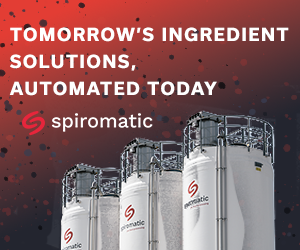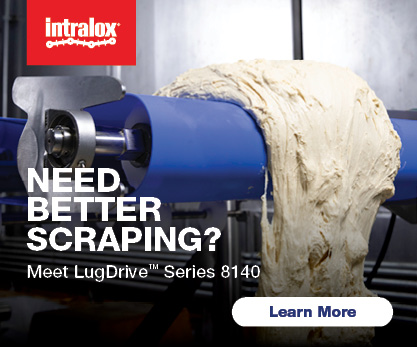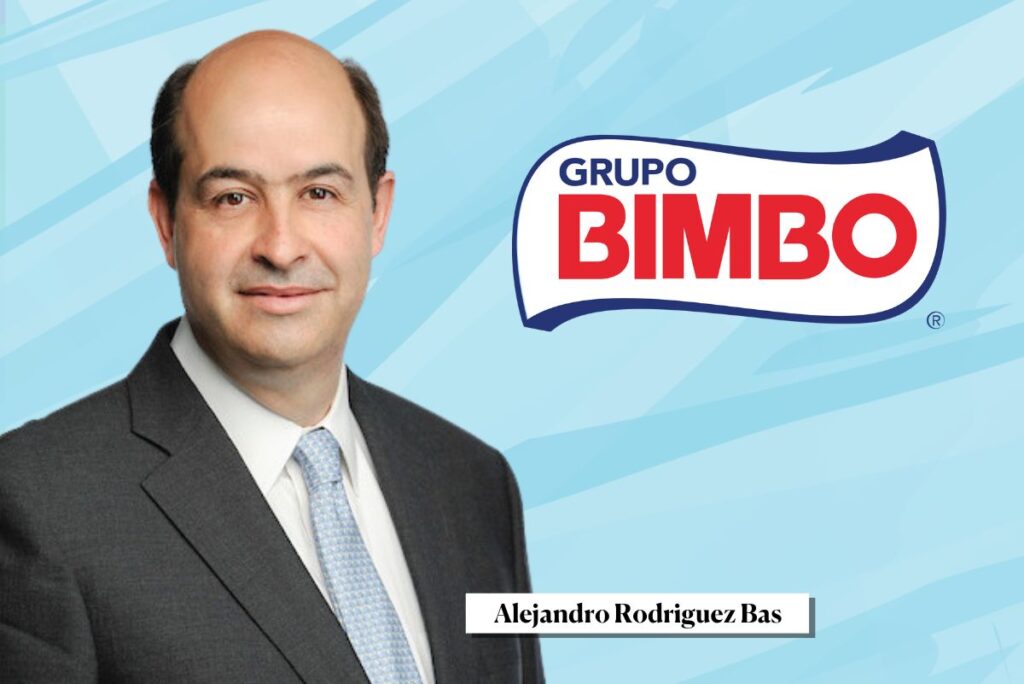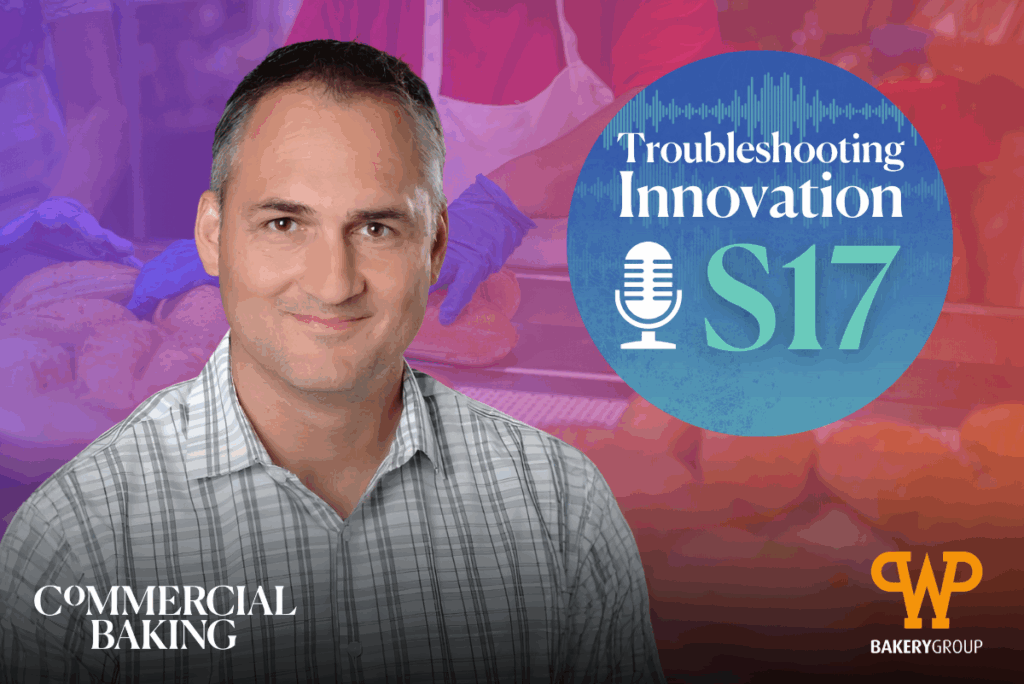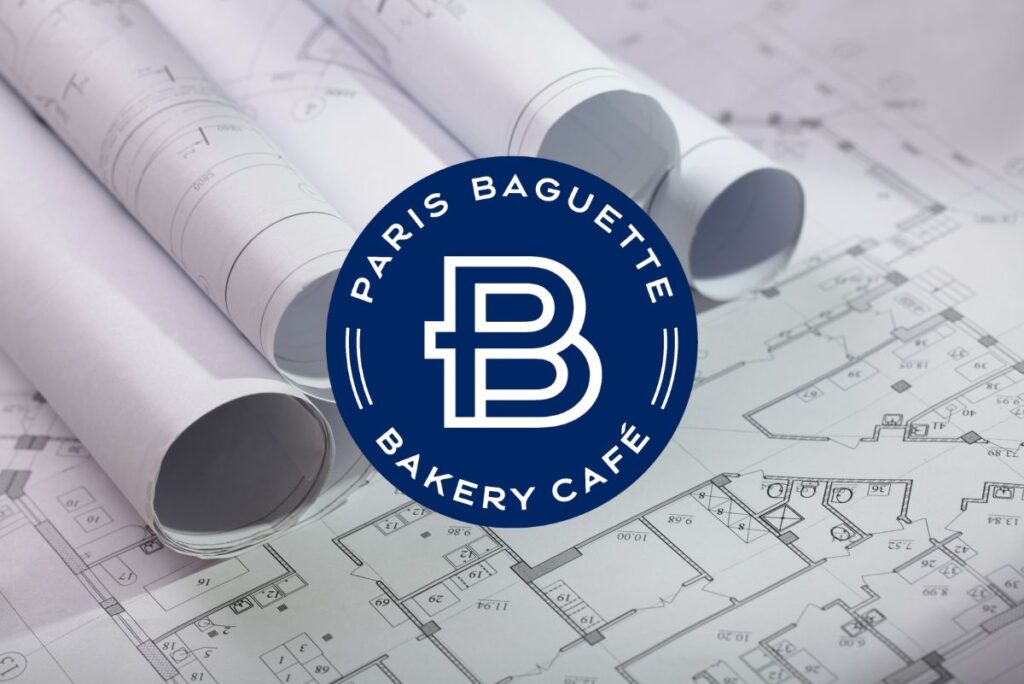Welcome to Season 17 of the Troubleshooting Innovation podcast. Spiros Assimacopoulos, president and CEO of The Good Bread Co., shares his journey through automation, expansions and more … all to share the time-honored tradition of artisan bread. Sponsored by WP Bakery Group USA.
In our third episode, we’re experiencing the growth journey through an acquisition, operational integration and rebranding from Michigan Bread to The Good Bread Co.
Learn more about this season here, and tune into Troubleshooting Innovation on Apple or Spotify.
Joanie Spencer: In this episode, we are experiencing the growth journey through an acquisition, operational integration and rebranding from Michigan Bread to The Good Bread Company. Hi Spiro, thanks for joining me again this week.
Spiro Assimacopoulos: Hi Joanie. Great to be back.
Spencer: Okay, this has just been awesome, learning about this journey and your lessons that you’ve learned in growing this bakery, this company. Thank you so much for all of your honesty and authenticity. It’s been really incredible. We’ve spent the last two weeks getting to know you, and I have to say, it shouldn’t come as a surprise that you were ready to make an acquisition in the first 10 years of business. That does not surprise me at all. How did you know that you were ready to grow through acquisition? And how did Franklin Street Bakery in Minneapolis come onto your radar?
Assimacopoulos: Sure. Well, I think a lot of times, businesses can stagnate. Sometimes we’re constrained by our own imagination, maybe by the talent on our team. Maybe it’s the market that we’re located in. But when I did come across the Franklin Street opportunity — which was completely random — I believe they had marketed for sale, and they had a deal fall through, and they were kind of doing a, you know, a non-published, soft marketing. A friend of mine saw it on a business group, you know, online billboard said, ‘Hey, maybe you’d be interested in this.’
And obviously, it turns out I was. It was a 100% frozen facility, which is great. It’s normally a cleaner and more straightforward business model than managing a DSD department. And I knew from a couple of small roll-up acquisitions that we had made with a few local bakeries that there’s a tremendous amount of upside if the acquisition is successful. Normally, there’s this long list of synergies, and if you can achieve half of them, you’re usually in a great place.
So, fortunately for us, it worked out. It’s been fantastic, and it’s all of the normal things that you would expect: new customers, new sales channels, new products. Even more important than those really positive aspects are deepening your bench of talent within the organization: new skills, new personalities. And then secondarily, the amount of organizational growth that is required to pull this off. So, there’s certain things we do in life only because we have to, and a lot of times growing up and being responsible and finding new ways to take care of ourselves and our business is done by necessity. So that was a really great outcome from the acquisition.
Spencer: It really supports, you know what you said — I think it was last week that you said it — that you just have this growth mindset, and that’s what gets you out of bed in the morning, thinking about growth. So, did you know that you wanted to have multiple facilities early on?
Assimacopoulos: Not really. It was never really something I thought about. It was always just focused on getting through the day, the week, the month, the year, without necessarily a really crystallized vision of what I want the organization to look like. And remember this was 2021, and I remember approaching my partners about it, saying, ‘You guys are gonna think I’m crazy because we’re still trying to figure things out post-COVID, but I think this bakerY would be a great opportunity and really good fit for us.’
Spencer: And were they like, ‘Yes, you are crazy,’ or were they like, ‘hey, let’s go for it’?
Assimacopoulos: Both, Yes, which is usually how it works out. They think I’m crazy, but then they always support the things that that I propose as well.
Spencer: Okay, so you said, you know, you were still reeling from things that happened in COVID, and I think that you specifically have a very interesting COVID experience. It pretty much devastated your business, not only because the nature of your business was primarily foodservice, but also because you were in Michigan, where there was a massive statewide shutdown. And so you had this devastation of your business, but then you had this sort of boomerang where you pulled back, and then you just, like, shot forward, because there was this huge need when bread was disappearing off store shelves, and so you were able to make that sort of quintessential COVID pivot. How much did that experience play into the decision to expand?
Assimacopoulos: To be honest, Joanie, I don’t know what I was thinking about another bakery. I really don’t. There were so many things that we needed to work on in Taylor that, in hindsight, it was probably way more riskier than I perceived it to be at the time. The other challenge we had with COVID Wasn’t even so much the boomerang and the shift in sales channel. It was that, I think, pre- to post-COVID, we only had 10% of our staff. We had almost a completely new group of team members. And I think, gosh, we had, at one point, 70% temp workers. So just getting through the day was a real challenge. I’m glad I did it. I’m glad I had the — I don’t think bravery is the right word — but maybe the ignorance of moving forward with a risky deal, but it’s so far, it’s worked out fantastic.
Spencer: There’s, I think, a fine line between bravery and ignorance.
Assimacopoulos: Yeah. And I guess at the end of the day, it’s how much do you believe in yourself and in the team that you’re with?
That was another factor. That plant was an absentee-owned facility, so that team had already learned to operate and function without ‘mommy and daddy’ around, which was a big deal. I didn’t need to come in and teach them how to manage their plant. They were doing a great job, when we took over.
Spencer: That’s a huge benefit, right there, for anybody who was looking to buy that bakery.
Assimacopoulos: Yeah, absolutely.
Spencer: So, by bringing the second bakery in, Franklin Street Bakery — but now, well, I think we’ll get to it, you call it the West Bakery — but by bringing the second bakery and where did the growth happen? Was it in product development? )Because they make different products there) Was a geographic reach? Did you grow through new customers and different channels? Where primarily has the growth been?
Assimacopoulos: It was all of those things. And then additionally, that plant was capacity-constrained when we acquired it, so we were able to, in pretty quick fashion, shift some of the production to Taylor and capitalize on the demand. You know, I sensed coming out of COVID that it seemed somehow like the country shrank. We were getting calls from different customers from further away, different type of opportunities that really, for some reason, didn’t exist pre-COVID, and I had the sense that having multiple facilities with more direct geographic reach was going to, you know, yield the results we were looking for.
Spencer: Alright. So, I’m interested, I’m curious, because the new bakery is in Minnesota, and you, of course, are in Michigan. What are the benefits and challenges of operating facilities in two different states?
Assimacopoulos: So, there are a lot of tactical benefits. We now have a larger pool of talent in every position. We’ve got twice as much tribal knowledge. You know, a lot of times you call a baker, ‘Hey, I have this problem.’ And they’ll say, ‘Yeah, I solved that two years ago. This is what I did.’ So, a lot of idea sharing. You know, there’s a certain degree of, you know, balancing production. The two plants have some minor strengths and weaknesses comparatively. And then our ability to serve customers closer to, you know, to the end user is also critical. Freight is not the friend of the baker. Being able to be closer was really a huge benefit going to market and trying to work with some more of the regional type customers.
Drawbacks? You know, we touched on culture a little bit last week. You walk into any small business, and the culture is usually the owner. Does the owner yell a lot? Does the owner smile a lot? All these different things flow down, and eventually the business is filled with a team of people who ascribe to that culture, for better or for worse. So it was a real challenge for me, being a small business owner, going back to the days when we just had the trucks, and I was there loading my trucks next to my employees. How do I maintain the great aspects of the existing culture but then create an overarching culture that is consistent across both plans when I’m 800 miles away?
Spencer: How do you?
Assimacopoulos: So, it’s kind of more of the same. It’s having to be there. The first goal of any acquisition is to go in and build trust. Most humans don’t like change, so I found that it was incredibly important to get in and dig in and not only understand the business, but understand the people and the personalities as well, and how that whole microcosm rolled up into what was happening at that plant.
A lot of really specific work on not using certain words, like ‘us’ and ‘them.’ ‘You guys,’ ‘ours.’ It was a lot of, ‘No, this is all of us together.’ And even today, almost, you know, going on four and a half years, still reinforcing that.
So, there’s a lot of exchange between the two plants in terms of training. Most of the departments are integrated now, where there’s one leader for HR that manages both plants, one leader for operations support, which is what we call our maintenance department, finance, so on, and so forth.
So I specifically did not want to integrate every aspect of the business, only the ones that really mattered. You know, we don’t need to have the same toilet paper at both plants. That’s not adding value. But certain things, we definitely have to do things the same. We have the same metrics, the same dashboards, and a lot of it is rolling up into how can we master the process and management of multiple facilities as one, so that in the future, if there’s an opportunity for a third or a fourth plant, we already have a playbook.
Spencer: That makes sense. So, it’s been four years, where are you now, operationally versus where you planned to be? Were there any big surprises?
Assimacopoulos: There’s definitely been a number of surprises. Getting back to you need equipment, you need capital, you need operators. You change equipment. There’s also, oftentimes, a cultural change on the floor.
I’m very proud of the progress that we’ve made. I don’t think we’re there 100% yet. We’re getting pretty close. It’s taken longer than I anticipated, but that just kind of goes back to number one. No one on the team has done this before. We’re all kind of learning together. What’s the most important thing to tackle? How do we tackle it? How do we enact change so that it permeates throughout the organization and isn’t just something that management or supervisors are talking about for a couple of weeks, and then it kind of goes back to the way we used to do things?
Training is a huge thing. And, you know — we touched on bottlenecks quite a bit — and a lot of times in any manufacturing process, especially in baking, there are several issues that are lurking beneath the radar, and you don’t understand that they’re there unless you’re digging in on the floor every day, or until the bottleneck just before that bottleneck is solved.
We had an issue with scaling. We fixed that, and guess what? Now we’re seeing issues in mixing. So, we’ve got to bring in people to train and spend time and turn that around, and it’s not quick. To your point in the last episode, you can tell people what to do. Unless they really understand it and get behind what you’re trying to get them to do. It’s not going to stick.
Spencer: You can invest, make all those capital investments, but if the people are not on board and operating, it’s not going to work.
Assimacopoulos: Yeah. The more automated we get, the faster we run, it becomes almost exponentially more difficult to achieve that next level of performance.
Spencer: Interesting.
Assimacopoulos: I wish it weren’t that way, but that’s my experience so far.
Spencer: So, how do you handle training for two facilities that are 800 miles apart?
Assimacopoulos: So, number one, we’ve got an internal training program, and we’ve got a couple of different people who are designated to occasionally travel back and forth and spend at least four days on the floor with that team. That plant runs three shifts, so that’s a challenge as well, because second and third shift never seem to get quite as much attention as first shift.
We send as many supervisors as we can every year out to different seminars so they can learn from outside voices and get a different perspective. And in there, usually, those seminars are usually artisan based because a lot of the associates that come to work with us, this is their first job in baking, and they’re seeing the movie halfway through. They never saw the movie when I had the 20-part divider and, you know, was barely making any dough at all. So, I really like to give them that experience of mixing their own dough, dividing by hand, shaping, rounding, all of that. It just gives you a much more intimate understanding when you’re trying to run, you know, 500 pounds every seven, eight minutes.
Additionally, there’s a couple of really great industry consultants that we bring out two to four times a year. Whatever we pay them returns us probably, you know, 10x. Turnover is as low as it has ever been in the 15 years I’ve been baking. But you still have new people, and bringing in a mixer who’s never mixed a dough before … it’s not riding a bike. Once you figure it out, you can do the job, but it’s a constant, often several months long craft, if you will.
Spencer: So, when you send team members out to seminars, I feel like that’s a huge morale booster beyond just learning for their job. Like, it helps them do their job, but does it really help, you know, from that culture perspective, do they feel valued? That you’re willing to send them somewhere to invest in them, and, you know, it’s kind of a cool experience.
Assimacopoulos: Yeah, absolutely. Getting a trip paid by your company to go to San Francisco or to go to New England. Most recently, we had an FAT in Austria, so I sent two of the ops support members to learn how to maintain the equipment, and then I sent two bakers to learn how to use the equipment. One of them had never traveled outside of the country. First time to Europe, having a vendor take you out for dinner every night? I enjoy that, and I’ve been doing this for a number of years! So, for a young supervisor to have that experience is really valuable.
Spencer: I mean that truly is, like, that’s a difference between cost and investment. That gives staying power, and not just in terms of longevity, but in terms of a commitment to wanting to improve and wanting to make sure that the bakery does well and that the product does well. ‘I really am invested in making sure that I’m doing this right and that I understand the machine.’
If I were in their shoes, that’s how I would feel. If my boss was willing to send me to learn how to use the machine, go to go to Austria to learn how to use the machine, I’m going to be really excited and empowered to use that machine in the best way that I possibly can.
Assimacopoulos: Yeah, absolutely. It’s been great. I wish we started doing it years ago. I would just go by myself, and great for me, but I’m not the guy running the machine all day long. So yeah, it’s something we’re going to continue to do more of.
And actually, with a lot of my vendors, I’m kind of encouraging them to create mini universities. Because once again, as you increase that automation scale, and you’re running fast, when things are going good, they’re fantastic. When they’re not, they could be devastating. And the difference is having people who know that equipment. I’d be more than happy to send two, three tech at a time to you know, wherever it is, in their shop, in their environment, and they can go through all the details, all the ins and outs of that equipment, so these guys come back knowing and understanding the equipment so that we can better maintain it. And then when things do go wrong, they know where to look. They’re not trying to diagnose in the middle of an operating bakery with bread overproofing and all the pressure that comes along with that,
Spencer: Or they’re not going to be apt to not say anything at all for fear of getting in trouble. Like, ‘I don’t know if this is how it’s supposed to be, but I better not say anything, because I don’t want anyone to think I did something wrong.’
Assimacopoulos: Right. So, it’s a confidence thing too, for sure.
Spencer: So, are the bakeries fully integrated now? Is all of that operationally integrated? Are you using an ERP system?
Assimacopoulos: We still struggle a little bit. We’ve got an ERP system at West. We haven’t implemented it yet at East. That’s one of the projects for when we’re not as busy, which never seems to happen.
But most of the departments are fully integrated; accounting, finance, sales, operations, for the most part, are integrated. Couple of things that we’re really working on now are getting a one solid procurement department, instead of each plant doing its own thing. And then also supply chain. With the nature of some of the new customers, your margin can really erode if you’re not managing your freezing, your freight, all those things properly. So that was something that post-merger, we kind of learned the hard way.
One of the original ideas was, ‘Well, why don’t we specialize each plant? We have to buy less equipment, it’s less training, it’s more focused and naturally more efficient,’ which is all true, but post-COVID, the cost to freeze product, the cost to ship product, has increased dramatically. So, a lot of those operational efficiencies that we realized were completely eroded by the increase to freight and freezing. It’s another one of the long list of great ideas that just didn’t work out in real life.
Spencer: Which is the story of an entrepreneur, right?
Assimacopoulos: Sure.
Spencer: Okay, so last week, I mentioned seeing you at IBIE. You’ve experienced two IBIEs since the acquisition. How is it driving your show floor experience, as far as what you’re looking for, for capital investments for both bakeries?
Assimacopoulos: So, first and foremost, we’re bringing more and more team members to the show every year, just to give them exposure to the industry. We touched on relationships in previous weeks. It’s important that I have relationships with people in the industry, but it’s also important that my team has the opportunity to develop those relationships. The more solid relationships we have as an organization, the much better off we’re going to be.
In terms of what we’re looking at, at the show, where we’re incrementally, you know, ‘moving up the food chain’ of automation. So, lot of emphasis on automatic proofing. You know, two IBIE shows ago, that was like, ‘Someday.’ Now, it’s 24 months. We’re really thick into understanding what is going to be the right solution for us. And once again, what are the tradeoffs when we move to that level of automation?
Spencer: Yeah, because there’s always going to be a tradeoff, and you just have to plan accordingly about who and what you want to be.
Assimacopoulos: Sure. And my understanding from my fellow bakers is you’ve got about a two- or three-degree range in your dough temp when you’re in automatic proofing. And you go outside of that, you either get gaps or you get you get bottlenecks at the at the tunnel oven. So once again, it’s another sea change for the team’s ability to control the inputs in the process. Easier said than done.
Spencer: Yeah, something can go wrong in a matter of minutes and set you back in a big way. So, do you have any thoughts on what’s on the horizon for what you’re looking to invest in?
Assimacopoulos: Yeah, it’s completing the second tunnel oven project. Automatic proofing. We’re in the midst right now of upgrading both our bread line and roll line in Taylor; we’re going from a six-pocket roll line to an eight-pocket and a two-pocket bread divider to a four-pocket.
And then my stretch goal for about 30 months from now is to get back into a sheeting line so that I can produce what my definition of artisan bread is at a really high scale.
Spencer: That’s exciting!
Assimpacopoulos: Ultimately, that’s where, that’s where my heart is in baking. That was kind of my start. And I’m looking for, I think there’s opportunities in the market to bring what I have in mind. And obviously consumer trends are changing and changing real quick, but I don’t think a move to healthier, naturally fermented food is a is a fad.
Spencer: Agree.
Assimacopoulos: I think this is going to become the standard, and I’m glad to see that. You know, in North America, we’re kind of returning to what were probably the prevailing expectation of bread — or bread specifically, but food — maybe pre-World War Two.
Spencer: I think from a perspective of sustainably being able to feed people, manufacturing is necessary when you balance that with the consumer sort of trepidation toward manufactured food and processed food. Artisan bread is the solution.
Assimacopoulos: Absolutely, yeah. That’s right in my Bullseye for next couple of years.
Spencer: I love it. I love it. Okay, I’m going to shift gears. Still talking about the acquisition, but I want to talk about the rebrand. We’ve mentioned it throughout the month that you went from Michigan Bread to The Good Bread Company; that happened with the acquisition. But were there any other factors that led to your decision to rebrand?
Assimacopoulos: Yeah, so coming out of COVID, there were huge opportunities in retail. And we did make some inroads to retail. We thought we were going to expand faster and deeper into retail than we actually did. Michigan Bread is a fantastic brand in Michigan, and there’s a lot of brand recognition. And we have the mitten in our logo. I don’t know if you ever picked up on that. But I always asked, ‘What happens when we put Michigan Bread on the store shelves in Columbus, Ohio?’ That’s not going to work.
So, the idea was, we need to find a brand that kind of represents who we are and our approach to bread that will be appealing to a national consumer. So that’s how we developed The Good Bread Company. However, this was a pretty hefty mistake that I made during and post-acquisition. I underestimated the value of a brand to a local consumer base.
So we immediately changed Franklin Street bakery to The Good Bread Company, and now four years later, we’re at trade shows, and some of the buyers will say, ‘Oh yeah, you used to be Franklin Street.’ So, we didn’t do an effective job of communicating to the existing customers that we were making a change, and why and what that meant. I think lesson learned there is, there’s a huge amount of value in a brand, and don’t take that for granted. If anything, do what you can to maximize that, instead of kind of doing a hard pivot, which is what we did.
Spencer: Well, that’s, I mean, that’s a good — a hard lesson to learn — but a good one. What did the process to rebrand look like?
Assimacopoulos: We hired a branding marketing firm, and we went through the entire creative process and developed artwork and bags. As you grow, and I know we’re talking a lot about lessons learned and growing, is you can’t be in three places at once. You can’t be an expert at everything. It’s like planting a garden. If you don’t have time to water all of the plants and prune them and take care of them, some of them are going to wither. So, it’s, it’s important to understand limitations and get outside help if it’s available and if you can afford it. So that was an area where I thought that, once again, we didn’t give enough attention. It was kind of, you know, ‘Oh, we’ve got another marketing meeting. We’ve got another branding meeting. This, is getting away from my day job.’ So, yeah, in a perfect world, I would do a redo on how that was managed.
Spencer: Are you happy with the brand? Just maybe do things differently with how it was executed?
Assimacopoulos: That’s a good question. My initial thought is, is maybe not; maybe continue with the Franklin Street brand and then specifically utilize the new brand if we broke into national retail counters. Yeah, I just don’t know if it’s if it’s added value.
Spencer: Interesting. So, what do you do from here? Do you just stay the course?
Assimacopoulos: Yeah, at this point, we stay the course. We continue to communicate as much as we can with customers. And that’s tricky, too, when a big portion of your book of business is through foodservice because you don’t always know the end user. There might be some, but you know, they might switch from one distributor to another, and you don’t know. So, getting out there and communicating that message to them is really critical, but it is a challenge to find them, understanding exactly who your target is.
Spencer: I have one last question for this week. I mean, this week has gone — this conversation — has gone by really fast. It’s really interesting. There are just so many facets to an acquisition, and a lot of them you just don’t realize until you’re in it. So, with the experience that you’ve had, what’s the key to a smooth integration when a new bakery comes into the picture and then it’s followed by a rebrand? How do you get everybody on board for all of this change?
Assimacopoulos: Yeah, that’s really challenging, because when we acquired Franklin Street, there was exactly one person in that company that knew that a transaction was occurring. So, outside of dealing with Pat Siebenaler, my COO, I had no opportunity to meet with the team or to plan before the big reveal. And essentially, I walked into the conference room, and all these people are looking at me with fearful looks on their faces.
‘Hi, I’m Spiro, guess what?’
So, yeah, a lot of planning. Once again, if you can afford it, some outside help from people who’ve done it before. I mean, I literally bought a book on business acquisitions, and I followed the outline that was provided in the book, which was fantastic. But it goes back, once again, to building trust. A lot of steady, repetitive messaging to the team and empowering them to be a part of the decision and change that inevitably occurs when one business is acquired. Because the worst thing for any acquisition is to lose valuable people.
Spencer: Absolutely. It takes you backwards. Well, that’s a really good stopping point, because it will segue us into next week, and that subject is something that I kind of coined as growing pains part two. So we’re going to look at how you’ve managed this integration and bringing the operations together and where you are today. So that’ll be for next week. But Spiro, thank you so much for this week. This was really interesting to hear about this stage of your growth and the decision to acquire a new bakery.
Assimacopoulos: Thanks so much.

